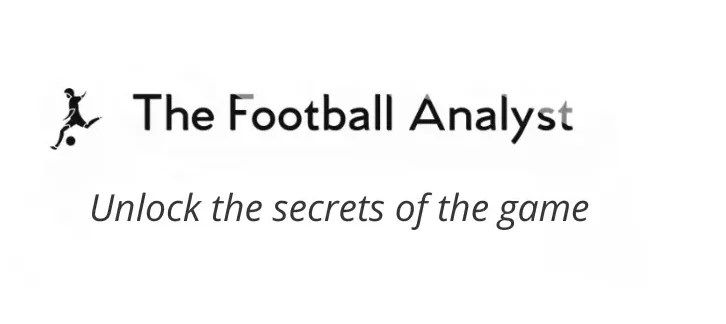Cesc Fábregas, known for his brilliant footballing mind and vision on the field, has embarked on a new chapter with Como 1907. As a player with immense experience at the highest levels, Fábregas brings a wealth of knowledge to the Italian club. In this tactical analysis, we will explore how his presence influences the team’s style of play, his role within their setup, and the impact of his leadership both on and off the pitch. Join us as we delve into the tactical intricacies of Como under the influence of Cesc Fábregas.
Build-up
Low Build-up
In the low build-up, Fábregas sets his team up in a 1-4-2-1-3 formation.
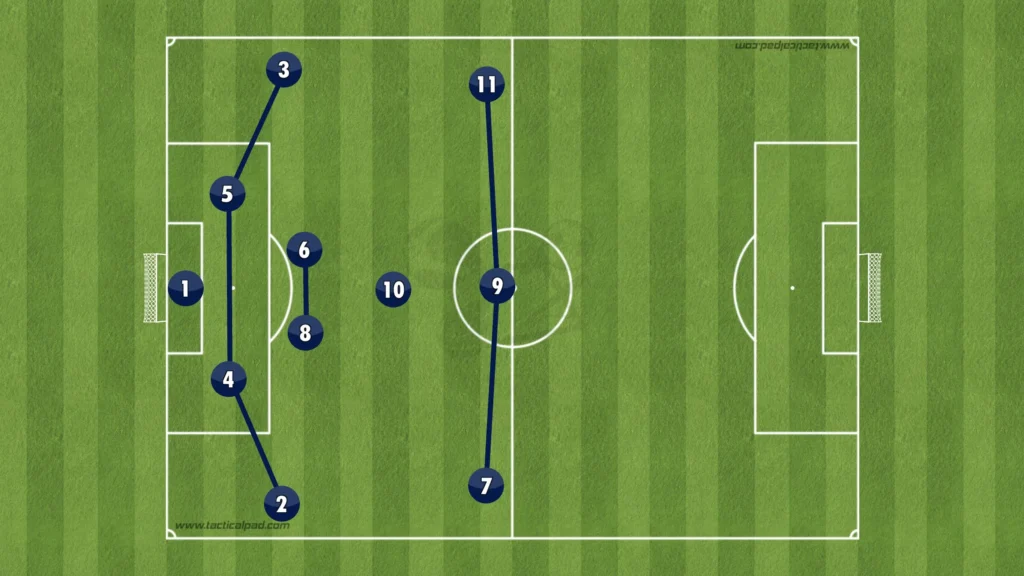
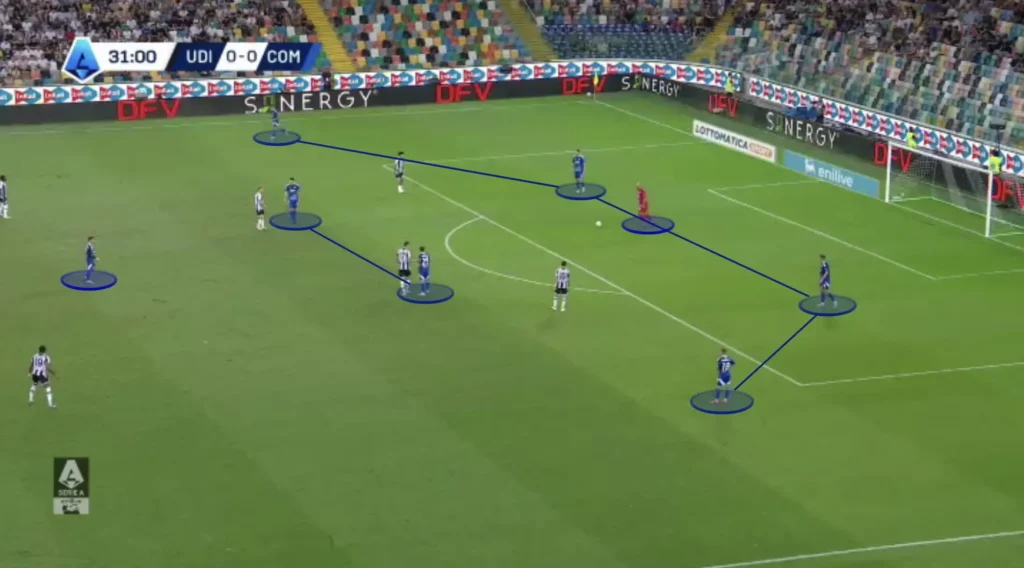
The wingers usually start wide and come in when the play starts. This often gives Como a numerical superiority in the midfield, which will help them beat the opposition’s press. The wingers also have better conditions to win the second balls when they are in the middle. When the goalkeeper plays a long ball toward the striker, they will work together with the number-ten to win the second ball, which allows Como to establish possession higher up the pitch.
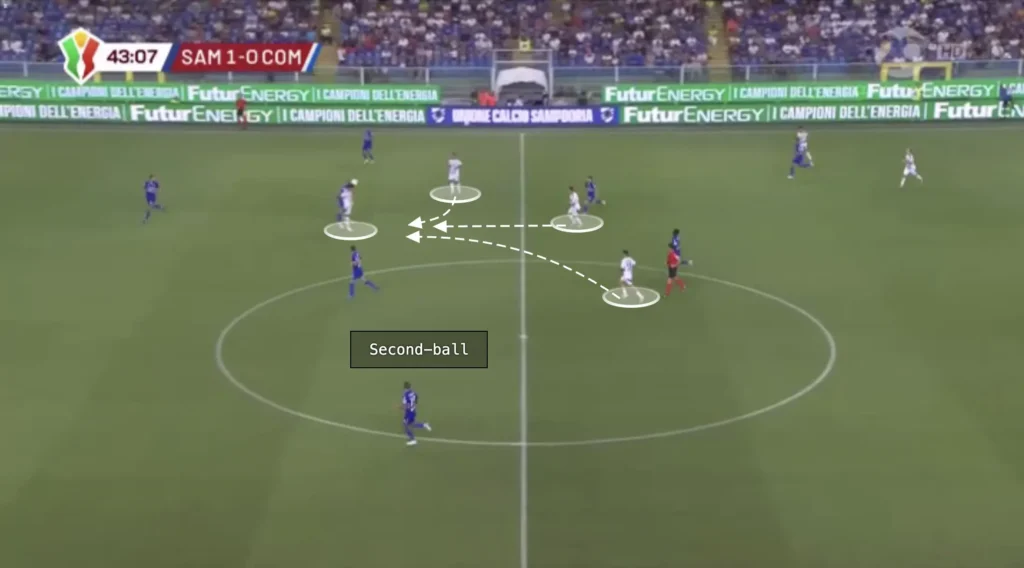
High Build-up
Fábregas’ Como uses the 1-4-2-1-3 formation in the high build-up as well.
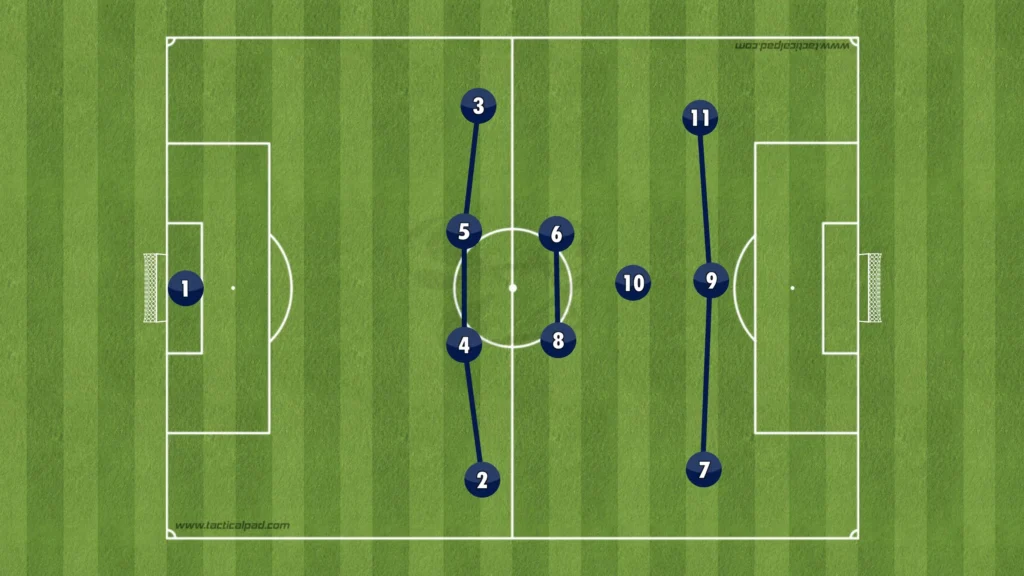
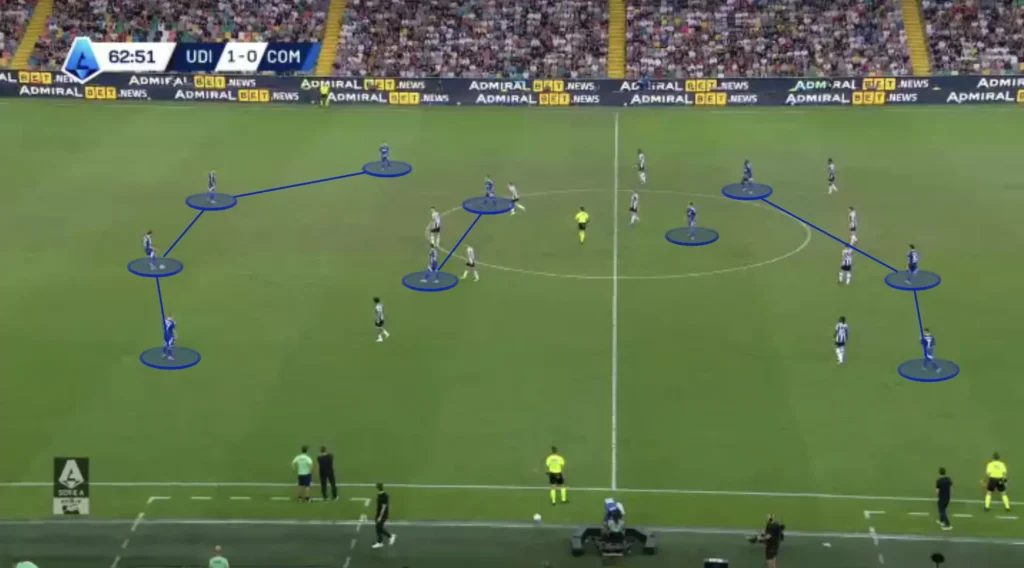
The wingers will often come into the middle when Como progresses the ball up the pitch. When the wingers invert, the opposition fullbacks also come in, which opens massive spaces out wide. This allows the Como fullbacks to make runs into these spaces and receive through-balls from the midfield or backline. They will have enough time and space to take the ball forward and cross it into the box.
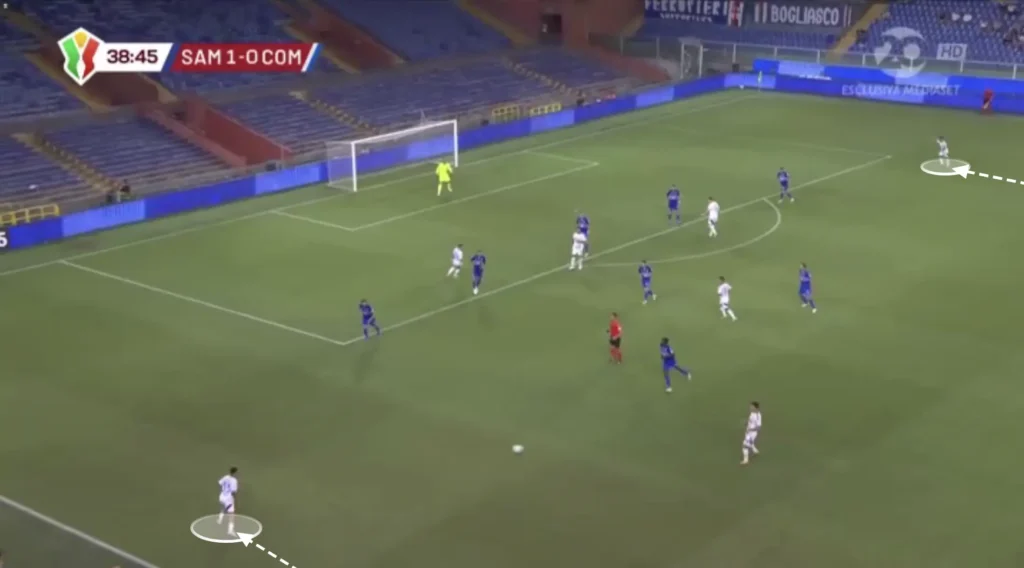
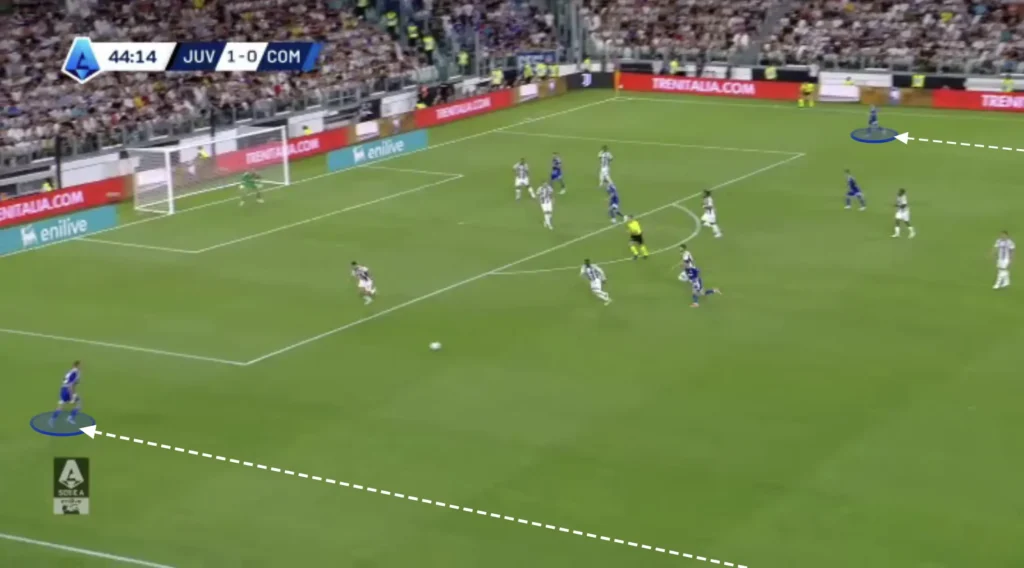
The four Como attackers are very fluid in the high build-up and will always rotate and interchange to create new structures. This fluidity creates confusion for the opposition, leading to new ways of beating the defense and creating goalscoring opportunities.
Numerical Advantages in the Middle
With the wingers coming in, there will be many players in the central areas, usually eight or nine.
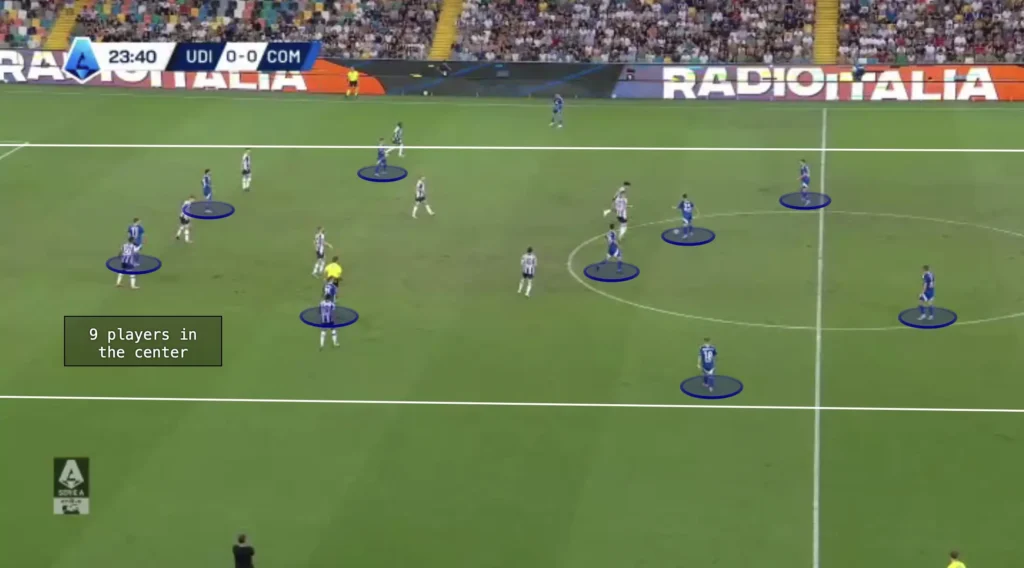
Having only one or two players out wide and the rest in the middle creates more options in the center and less space between the players. Fábregas likes this because he prioritizes playing through the middle. He needs one player out wide to pull the opposition apart while the rest create numerical advantages in the midfield areas. When a team outnumbers the opposition in the midfield, it can more easily retain the ball, exploit spaces, and progress the ball through the center. This advantage forces the opposing team to chase the game, which can lead to defensive errors and create opportunities for breaking down their defense. At the same time, it builds good conditions in defensive transitions since it allows more players to counterpress when they lose the ball.
Another purpose for keeping many players in the middle is to shorten the distance between them. This shortens the length of the passes, which naturally shortens the time between passes. This means the opposition players will have less time to push up and press, giving the Como players more time and control.
Third-man
Fábregas wants his team to play through the opposition when possible. One vital tool that they often use is the third-man principle. The third-man principle is a tactical concept used to create and exploit space by involving a third player in a passing sequence.
It typically works by having Player A pass the ball to Player B, who then quickly relays it to the free Player C. An opponent will block the pass from Player A to Player C, but the pass from Player B to Player C will be open, which is why he is needed in this passing combination.
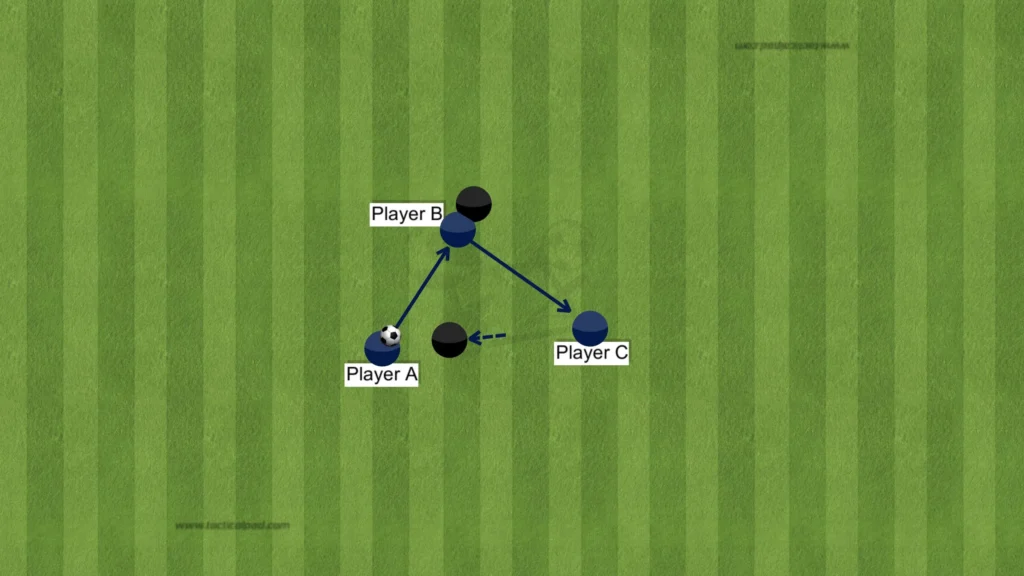
This movement often bypasses an opponent’s pressing line and opens up space, allowing the team to advance the ball more effectively. The key to the third-man principle is timing and positioning, as the third player must anticipate the play, position themselves advantageously, and receive the ball in a manner that breaks the opposition’s defensive structure. This principle is integral to many modern football strategies, promoting fluidity, quick decision-making, and dynamic attacking play.
Como will, for example, use third-man combinations to find an open holding midfielder when the opposition striker presses the center-back.
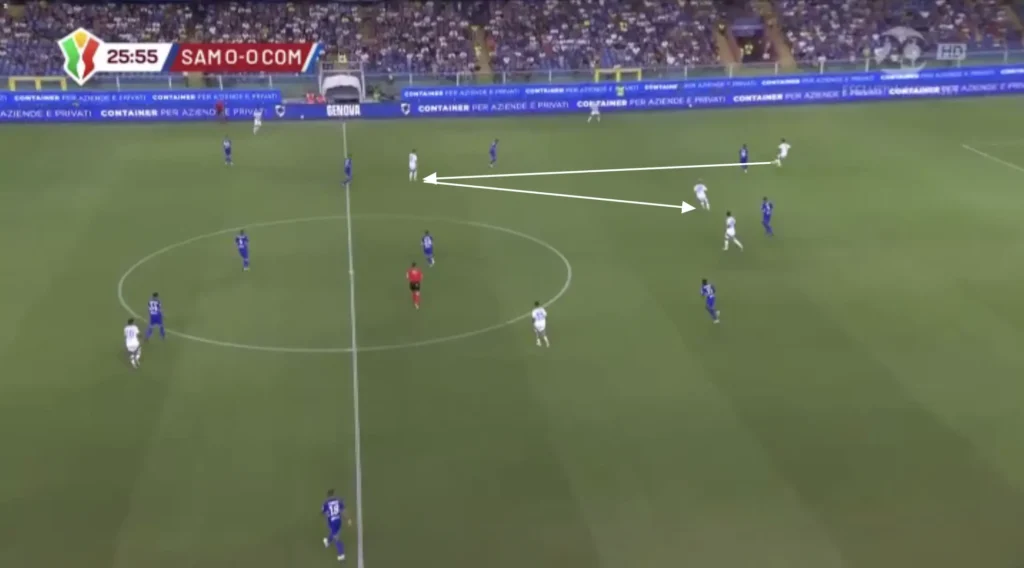
They also use third-man combinations further up the pitch to find the wingers or midfielders in the spaces between the opposition’s defense and midfield. The fullback will play the ball to the striker, who can use a one-touch pass to find the winger, who can drive the ball up the pitch, attacking the defense.
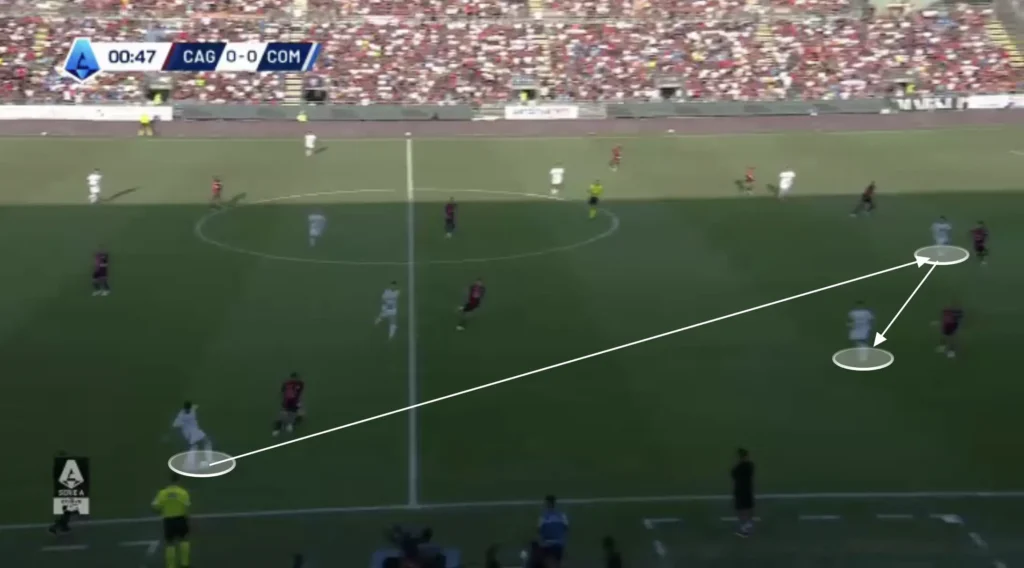
Fullback Positioning
Something Cesc Fábregas focuses on is the position of the fullback. When the center-backs have the ball, the ball-side fullback will be positioned slightly higher up than the opposition winger. He will be outside the winger, making sure the passing lane from the center-back is open. At the same time, he will be higher up than the winger, enabling him to take the ball past the winger when receiving a pass from the center-back. He can take his first touch forward with the back foot, progressing the ball past the opposition’s midfield line.
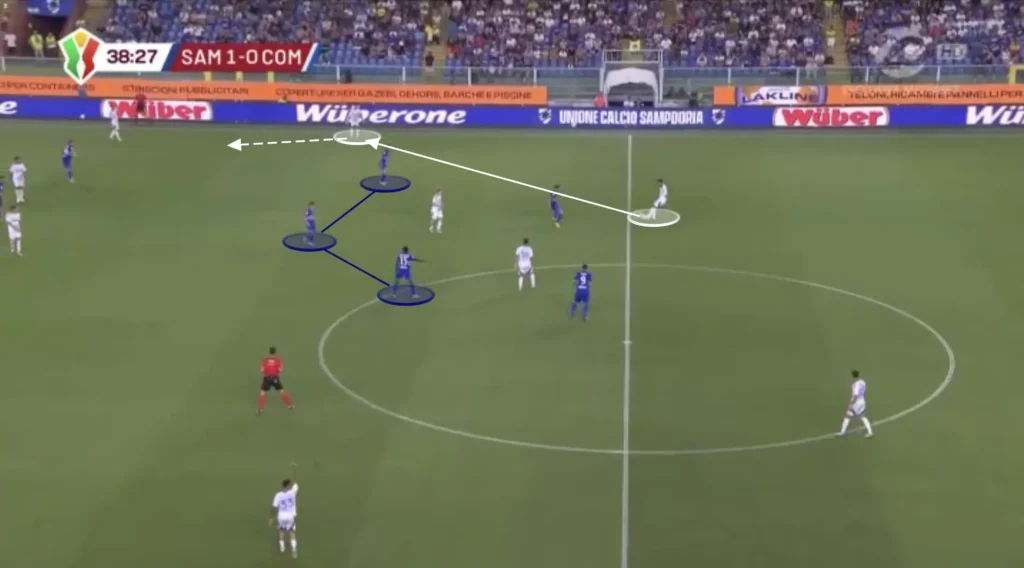
By doing this, Como can beat both the opposition’s forward and midfield line with just one pass, enabling quick progression up the pitch.
Balls in Behind
Como’s attackers consistently make aggressive runs in behind the opposition defense whenever the fullbacks receive the ball. This movement is a key aspect of their offensive strategy, designed to stretch the defensive line and create space. As the fullbacks advance, the forwards will run in behind the opposition backline, exploiting gaps between defenders and allowing themselves to receive well-placed through-balls. The coordination between the fullbacks and attackers makes Como’s offense unpredictable and difficult to defend against.
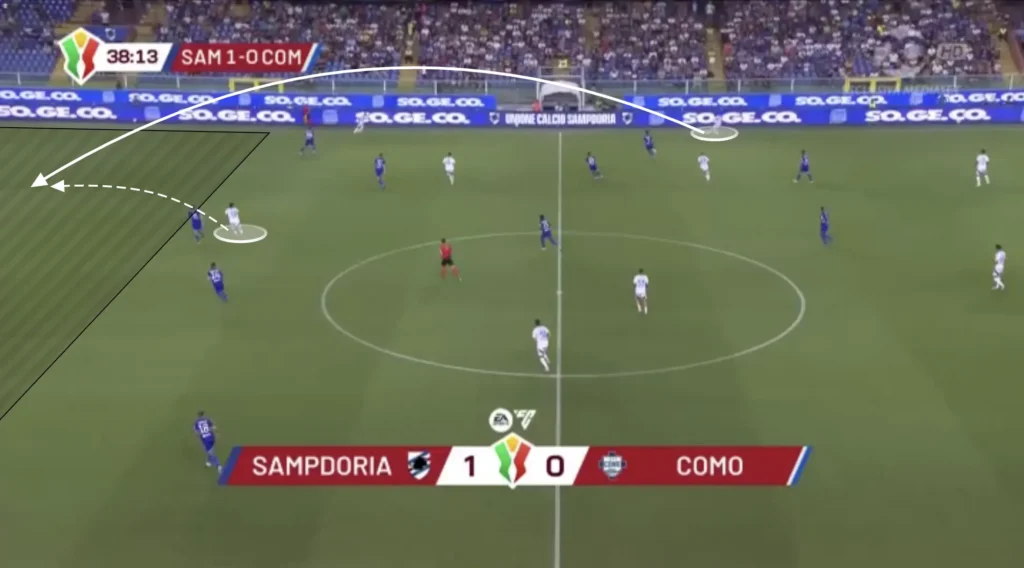
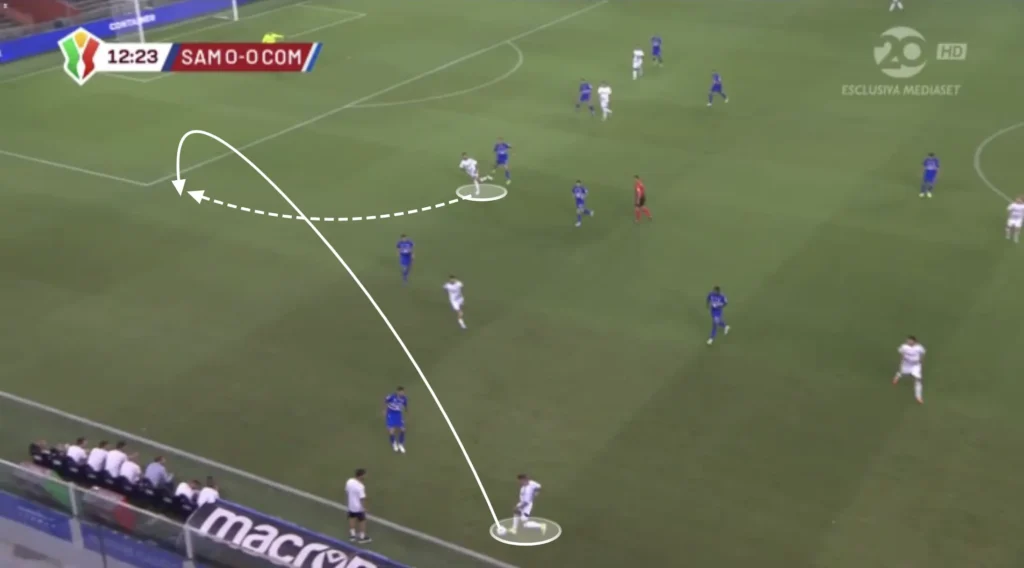
This constant threat prevents the opposition from playing with a high backline and closing the space between the lines. Instead, they have to drop the backline and protect the space in behind. This opens the space in front of the backline for the Como midfielders to exploit.
Additionally, if the through-ball is badly placed, Como will have two or three players close, who can compete for the second-ball.
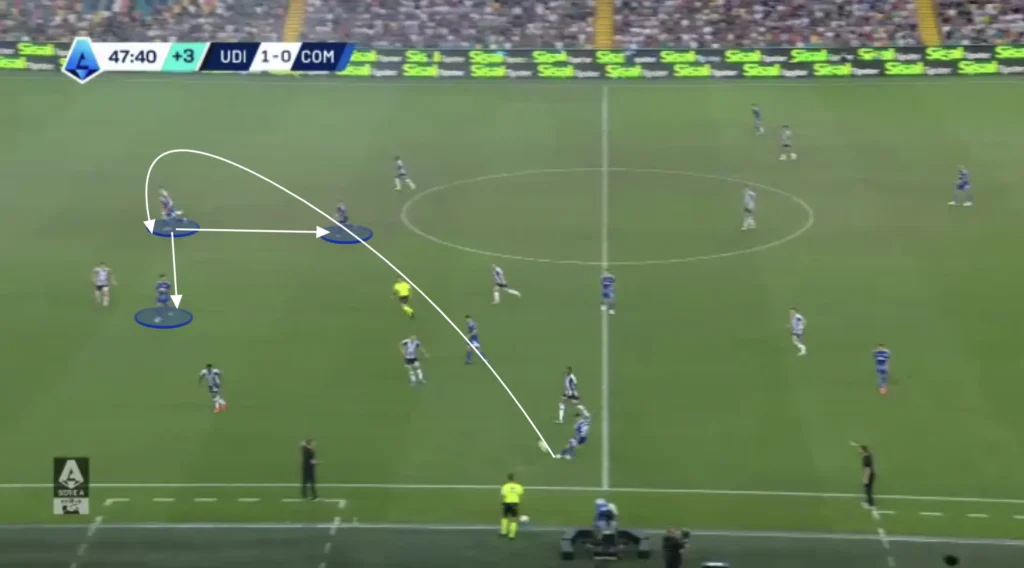
Attacking the Half-Space
Fábregas’ players usually look to create chances by attacking the space between the opposition center-back and fullback. They primarily do this from the wide areas with underlaps from the inverted wingers. When the fullback receives the ball out wide he will attract the opposition fullback. This opens the space between the opposition fullback and center-back, which allows the Como winger to make the underlapping run into this space. The ball can be played to the underlapping player, who can cross the ball into the box or attack his defender in a 1v1 situation.
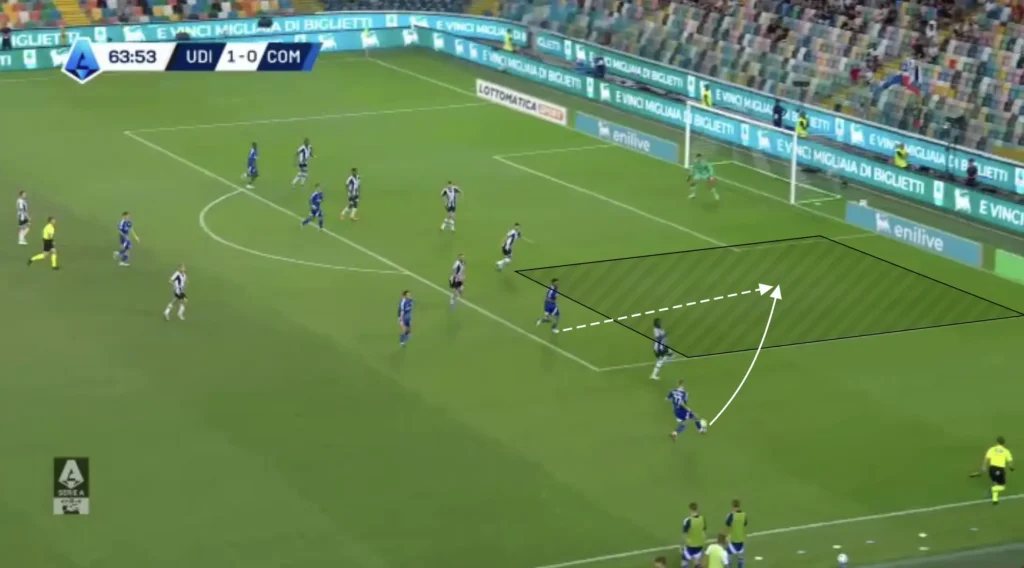
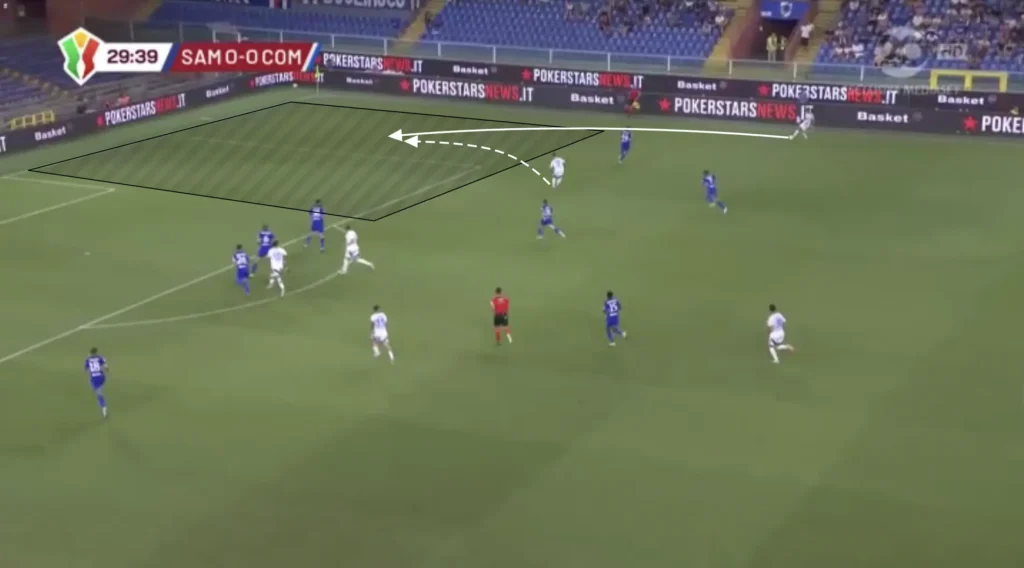
The fullback does not have to play the ball to the underlapping player. The run from the winger will often drag away an opposition defensive midfielder, which opens the space inside. The fullback can take the ball inside and shoot or find a pass to a free player in front of the backline.
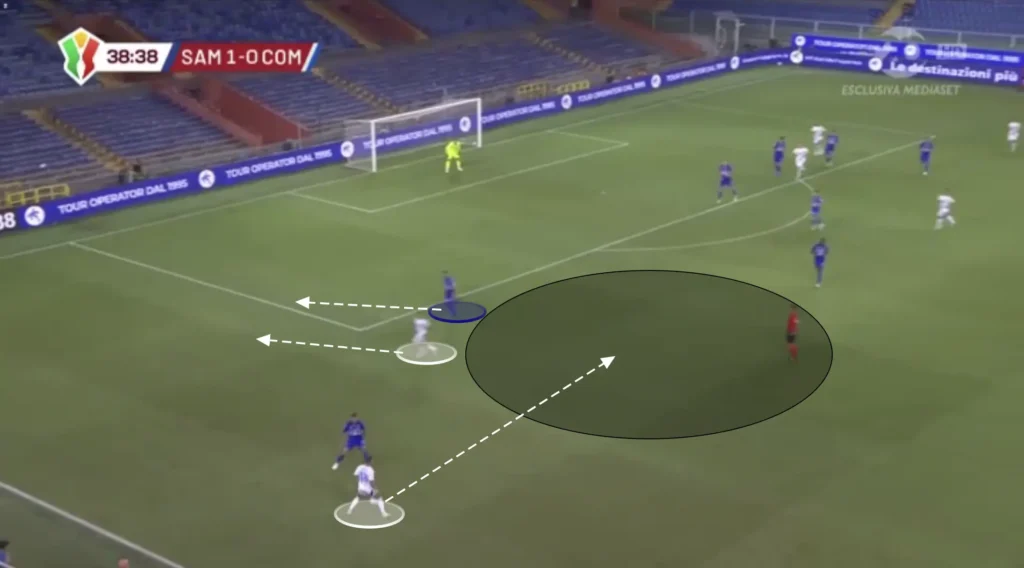
Overlaps
Como will also use overlaps to produce opportunities in the final third. When the winger gets the ball in a wider position and the fullback is nearby, the fullback can make the overlapping run, creating a 2v1 against the opposition fullback.
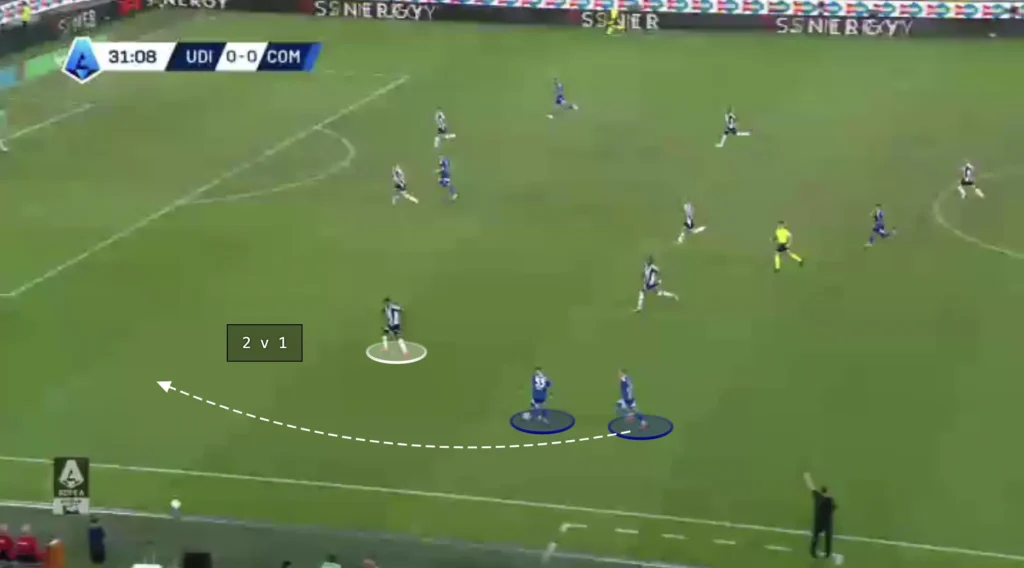
If the opposition fullback drops to cover the overlapping run, the winger could cut inside, taking a shot or combining with a midfielder. If the fullback covers the center, the ball can easily be played to the overlapping player, creating a crossing opportunity.
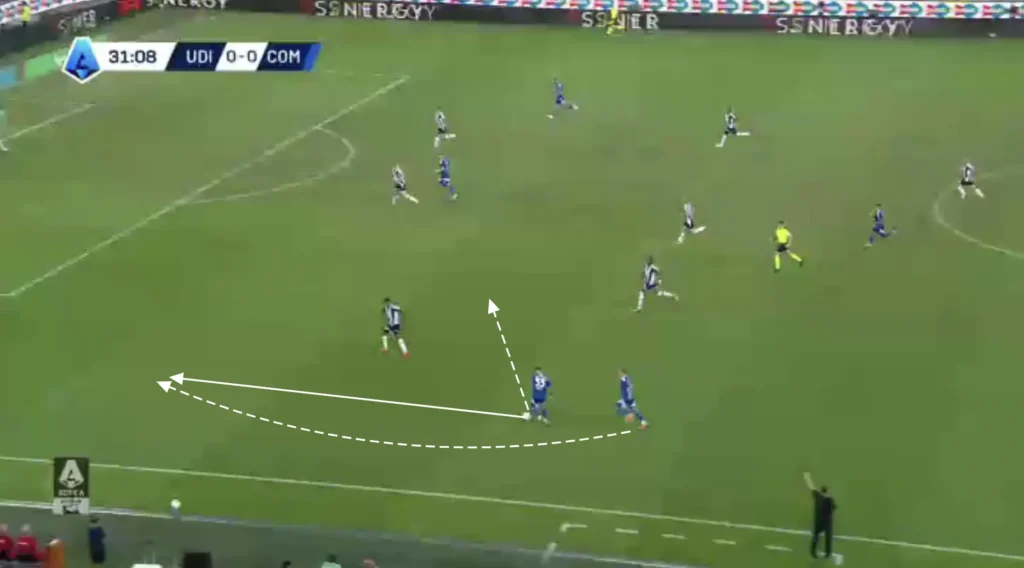
Defending
Fábregas’ Como uses a 1-4-2-3-1 formation when defending. They look to set up in a mid-block, always trying to close the center and force the opposition out wide. Fábregas wants his team to stay compact without dropping too low, preferably closing the space between the midfield and backline.
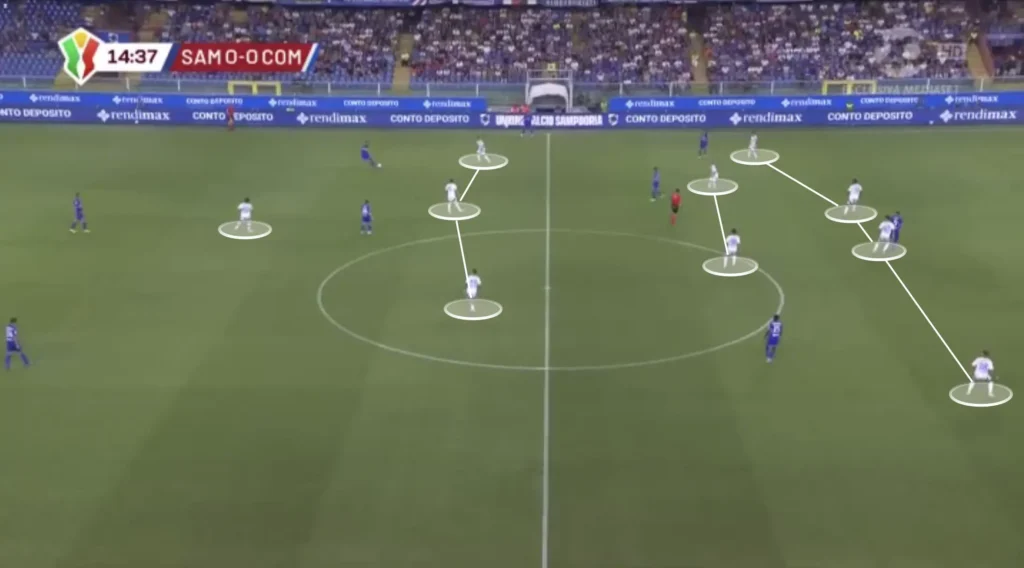
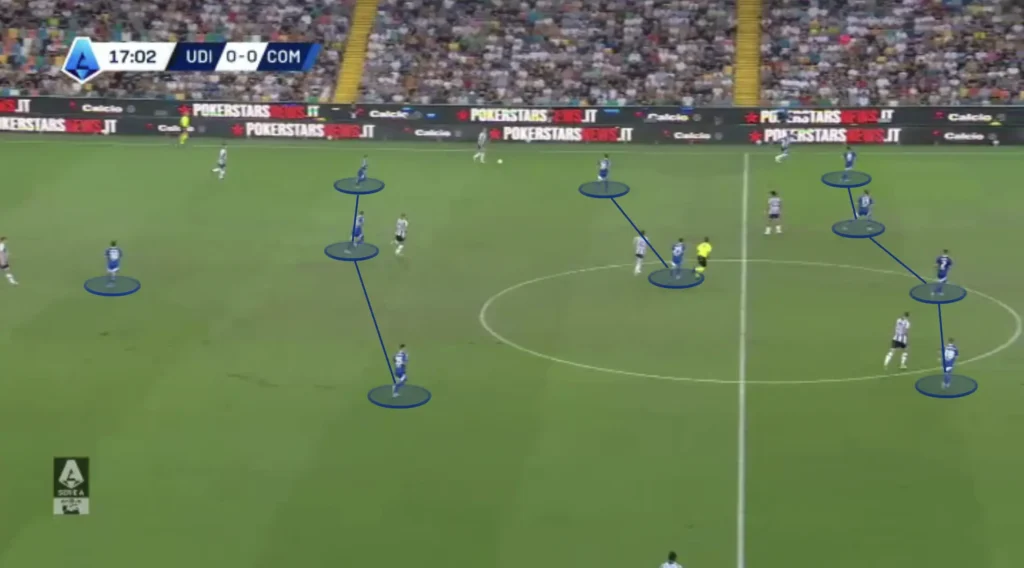
Defending in a 1-4-2-3-1 formation revolves around maintaining a compact and organized structure. The formation features a back four that provides stability, with two holding midfielders shielding the defense. These holding midfielders play a crucial role in breaking up opposition attacks and providing cover for the fullbacks when they advance. The three attacking midfielders work to stop entries for the opposition and cut off passing lanes, while the lone striker applies pressure on the ball. The team aims to stay compact, forcing the opposition to play wide and limiting their ability to penetrate through the center. By maintaining this structure, the 1-4-2-3-1 formation helps to control the middle of the pitch, making it difficult for opponents to create scoring opportunities.
Sometimes, the Como striker drops down next to the number-ten, creating a 1-4-2-4 formation. This creates a compact structure that, on the one hand, makes it difficult for the backline to find passes into the midfield. On the other hand, the opposition center-backs will have more time on the ball as the pressing distance for the striker becomes way bigger.
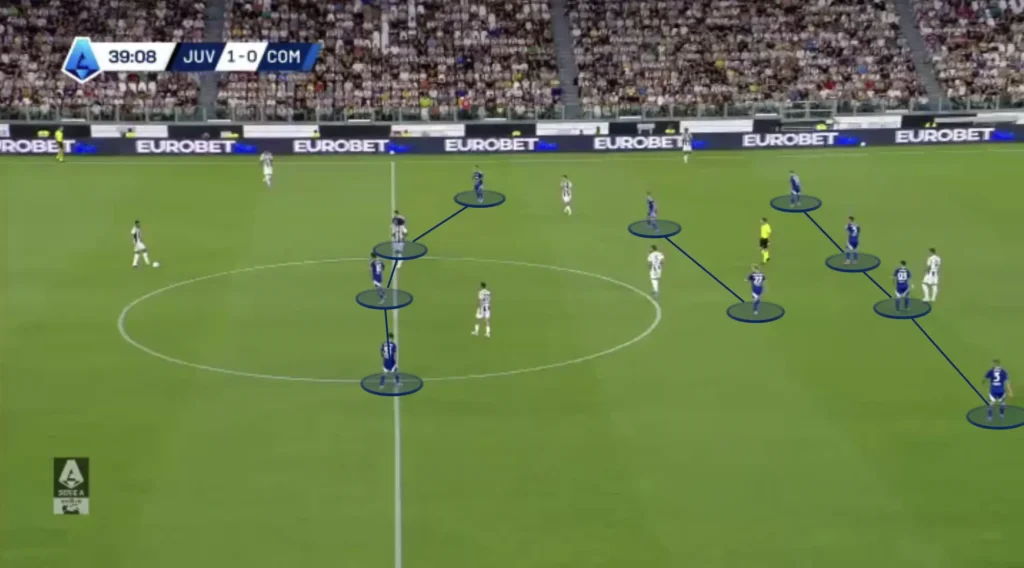
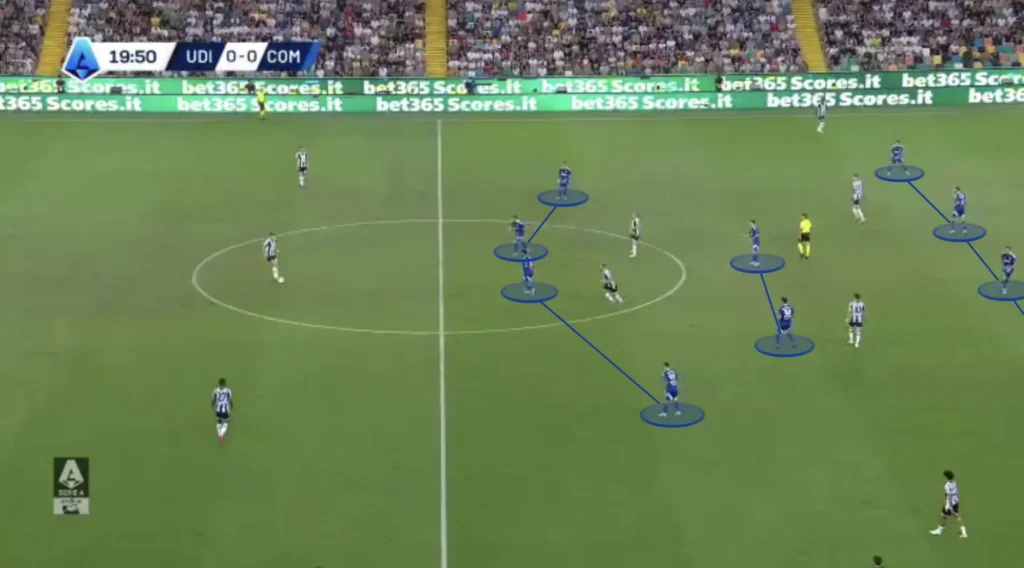
When the Como players feel the need to push the team up again, the striker will press the center-backs while the number-ten stays inside to cover the entries to the midfield. The striker will make an angled run, pushing the opposition to one side, and allowing the rest of the team to come across and win the ball by using the touchline as an extra defender.
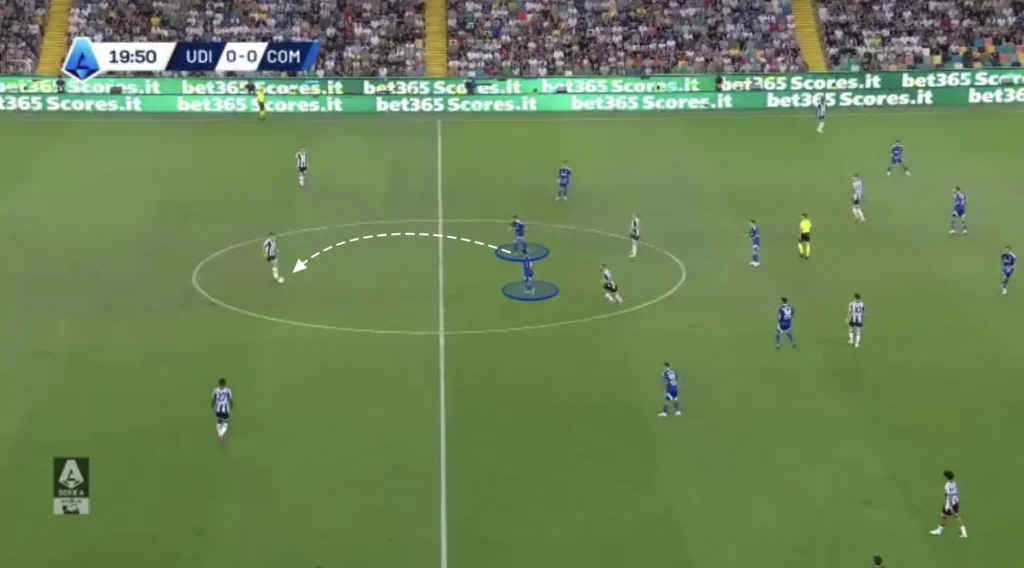
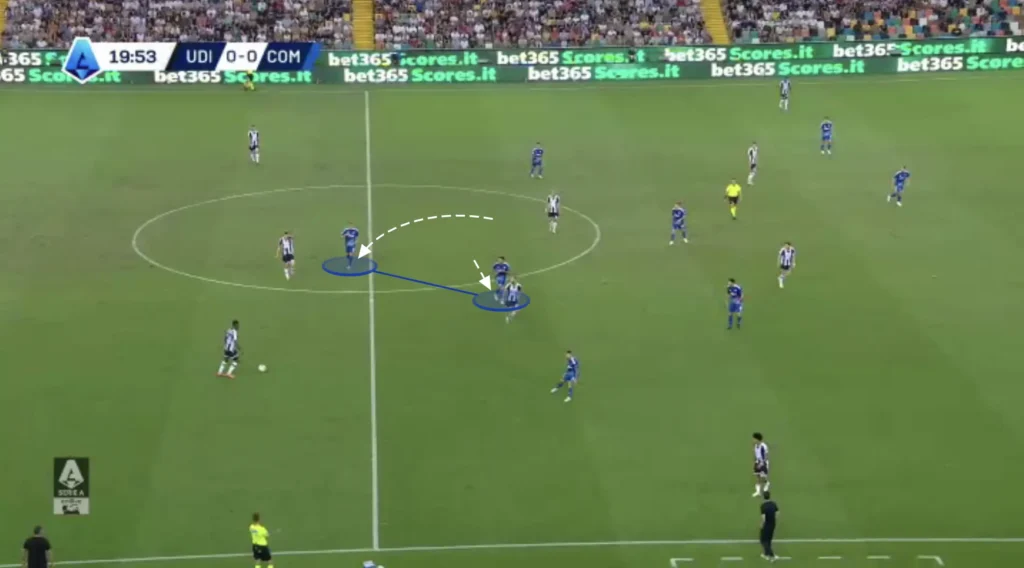
Transitions
Defensive Transitions
Positioning many players centrally, creating a numerical advantage in the midfield, creates good conditions in defensive transitions. Many players close to the ball after losing possession means that many players can work towards regaining possession. Fábregas’ players are also very aggressive in the first seconds after losing the ball. The four or five players closest will immediately jump on the opposition player with the ball and close the distance to cut off any passing lanes. This approach disrupts the opponent’s transition from defense to attack, forcing errors and creating opportunities to regain control in dangerous areas.
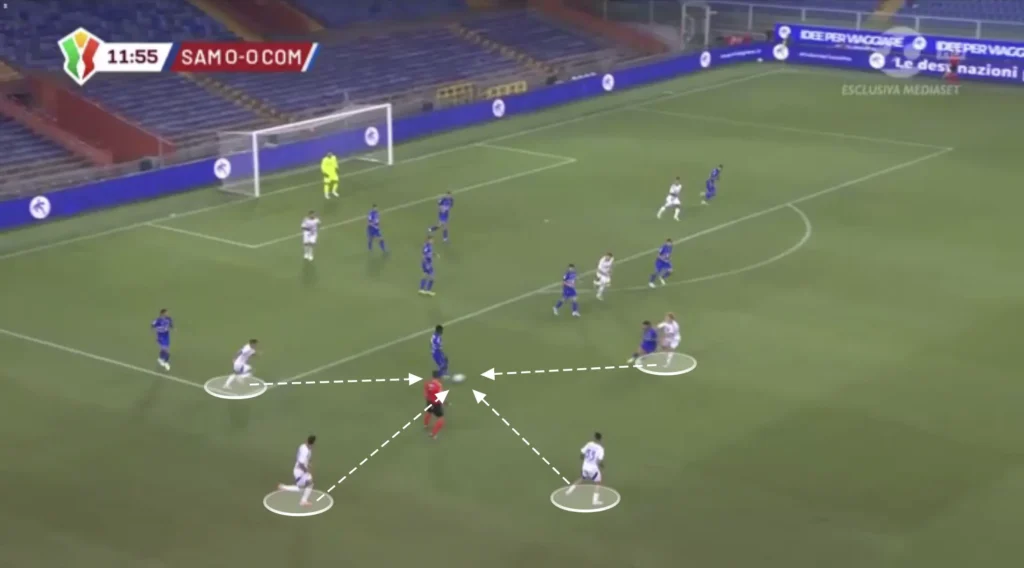
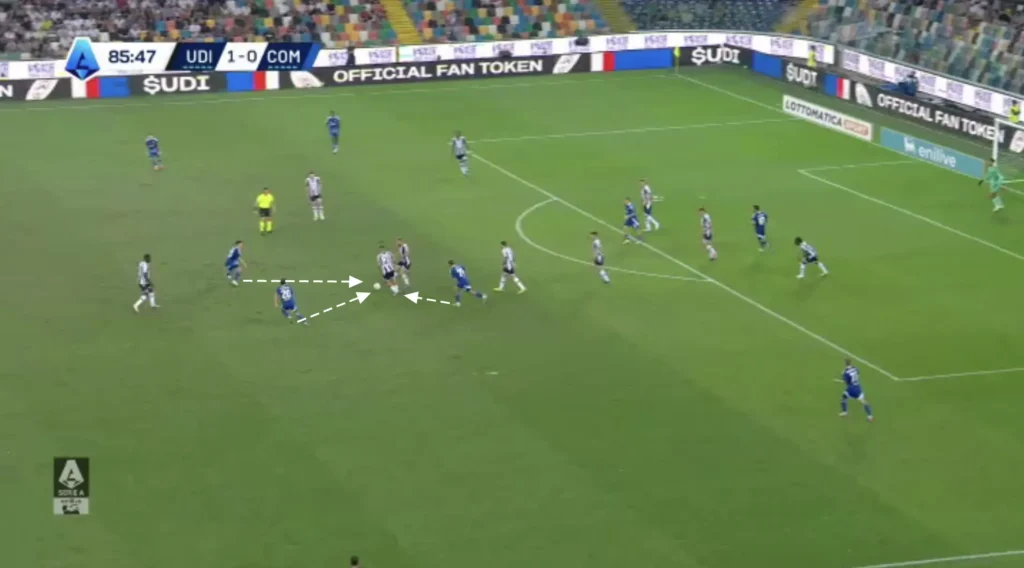
Counterpressing like this keeps Como on the front foot, allowing them to dominate possession and create more scoring opportunities. However, it requires exceptional fitness, tactical discipline, and teamwork.
Offensive Transitions
Cesc Fábregas also wants his team to counterattack in their offensive transitions. When winning the ball back, the team transitions quickly from defense to attack, utilizing the speed and movement of their forward players. Fábregas emphasizes vertical passes to exploit spaces left by the opposition, often targeting wide areas or gaps between defenders. Como’s counterattacks are well-organized, with players making intelligent off-the-ball runs to create overloads and support the ball carrier. This quick, direct style catches opponents off guard, making Como a dangerous team on the break.
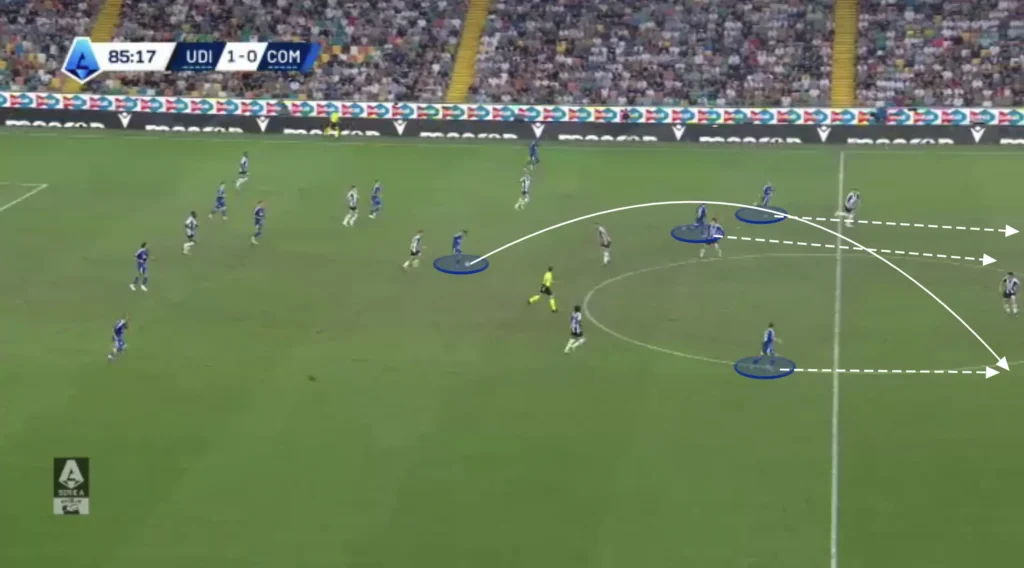
Final Thoughts
In conclusion, Cesc Fábregas’ influence at Como 1907 is evident in the team’s tactical evolution. His experience and vision as a player are reflected in Como’s playing style, characterized by intelligent ball movement, control in midfield, and an emphasis on possession. Fábregas’ understanding of the game has brought a strategic edge to the squad, helping the team develop a more cohesive and organized approach on the pitch.
As Como continues to grow under his leadership, the tactical shifts implemented by Fábregas could play a key role in their progress, both in terms of results and overall team development. His blend of technical expertise and on-field intelligence is positioning Como as a team to watch in the coming seasons.
